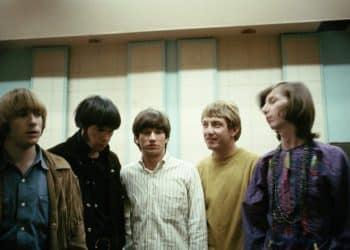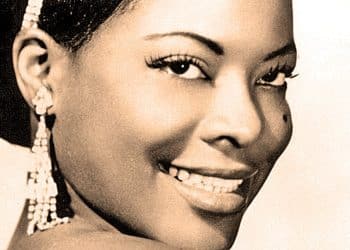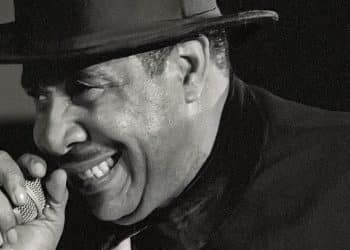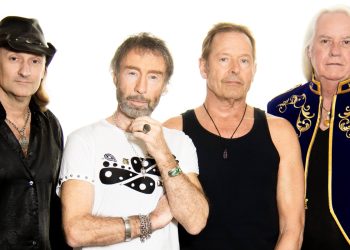Carl Perkins, the undisputed King of Rockabilly, left an indelible mark on the music world with his fiery rhythms, soulful guitar picking, and unmistakable twang. As one of the pioneers of rock ‘n’ roll, Perkins combined the raw energy of rhythm and blues with the storytelling charm of country music, creating a sound that would inspire generations of musicians, from Elvis Presley to The Beatles. His influence on music is undeniable, but it’s his songs—infectious, heartfelt, and bursting with character—that truly stand the test of time.
In this article, we’ll dive into the top 10 most popular Carl Perkins songs of all time, celebrating the tracks that made him a legend and continue to captivate audiences across the globe. From iconic rockabilly anthems to heartfelt ballads, these songs showcase Perkins’ unparalleled talent as a songwriter, vocalist, and guitarist. Whether you’re a lifelong fan or new to his music, this list offers a thrilling journey through some of the most electrifying and influential moments in rock history. So, grab your blue suede shoes and get ready to rediscover the magic of Carl Perkins—the man who turned a guitar riff into a revolution!
1. Blue Suede Shoes (1956)
Carl Perkins’ “Blue Suede Shoes” is a cornerstone of rock ‘n’ roll history, and its 1956 release marked a turning point in popular music. Infused with swagger, energy, and rebellious charm, the song captured the youthful defiance of the post-war generation. Inspired by a casual remark from a fellow performer whose shoes were scuffed during a dance, Perkins transformed a simple anecdote into a cultural phenomenon. The now-iconic line, “Don’t step on my blue suede shoes,” became more than just a lyric—it became a rallying cry for personal expression and individuality in an era craving both. Musically, the track is a perfect storm of twangy guitar licks, a punchy rhythm section, and Perkins’ spirited vocal delivery. It blends rockabilly, rhythm and blues, and country influences into something fresh and electrifying. What’s more, it was one of the first songs to successfully bridge racial divides on the charts, appealing to both Black and white audiences. Its commercial success was enormous, but its real impact lay in how it gave rock ‘n’ roll a defined attitude—confident, rebellious, and undeniably cool. “Blue Suede Shoes” isn’t just a hit song; it’s a lasting symbol of rock’s wild, untamed roots.
2. Matchbox (1957)
Carl Perkins’ 1957 recording of “Matchbox” is a masterclass in how to take a blues foundation and supercharge it with rockabilly fire. Originally a somber blues tune by Blind Lemon Jefferson, Perkins reimagined it with a fierce energy and rhythmic punch that made it unmistakably his own. The transformation wasn’t just musical—it was cultural. Perkins infused the track with the restless spirit of the 1950s youth, turning it into a lively anthem of frustration and yearning. The song’s central metaphor, “I’m sittin’ here wonderin’, will a matchbox hold my clothes?” speaks to a life in flux, on the move, filled with uncertainty and longing. His gritty vocals, paired with snappy guitar riffs and a driving beat, brought the song to life with an urgency that felt both personal and universal. It became a favorite not only among fans but also among fellow musicians. The Beatles famously covered “Matchbox,” further cementing its place in rock history. Perkins’ version is raw, vibrant, and incredibly influential—a shining example of how rockabilly didn’t just borrow from the blues, but revitalized it, giving it new shape and energy for a generation in search of something bold and real.
3. Honey Don’t (1956)
“Honey Don’t,” released in 1956, is one of Carl Perkins’ most charming and enduring contributions to rockabilly. What sets this song apart is its conversational tone and playful spirit. Right from the opening lines, Perkins engages the listener like a friend, drawing them into a back-and-forth that feels both casual and clever. The song’s lyrics playfully capture a romantic push-and-pull dynamic—teasing and cheeky, but ultimately affectionate. Musically, it’s a showcase of Perkins’ guitar skills, with his signature picking style adding layers of bounce and twang that drive the tune forward. His voice—relaxed yet full of character—gives the song a sense of spontaneity, as if he’s making it all up on the spot. That sense of easy-going fun made “Honey Don’t” an instant hit and a favorite on stage. Its legacy was further bolstered when The Beatles covered it years later, with Ringo Starr lending his own charm to the lead vocals. The fact that it resonated across continents and decades is a testament to its appeal. “Honey Don’t” is rockabilly at its most playful—witty, catchy, and full of life.
4. Boppin’ the Blues (1956)
“Boppin’ the Blues,” released in 1956, is an exuberant slice of rockabilly joy that perfectly captures the carefree, high-spirited essence of the genre. Carl Perkins brings a lively, almost celebratory energy to the song, making it feel like a Friday night party packed into two minutes of music. From the opening riff to the last beat, “Boppin’ the Blues” pulses with toe-tapping rhythm and vibrant guitar work, the kind that invites listeners to get up and move. The lyrics are simple but effective, painting a picture of good times, dancing, and living in the moment. It’s not trying to be deep—it’s trying to be fun, and it absolutely succeeds. Perkins’ guitar playing here is full of bounce and swagger, and his vocals carry a warmth that feels like he’s singing directly to a packed dance floor. The track was a celebration of music itself—how it brings people together, lifts spirits, and provides a joyful escape from the everyday grind. “Boppin’ the Blues” is more than just a song; it’s a musical mood, one that continues to radiate positivity and vintage rock ‘n’ roll charm.
5. Everybody’s Trying to Be My Baby (1957)
Carl Perkins’ “Everybody’s Trying to Be My Baby,” released in 1957, is a rollicking blend of rockabilly swagger and tongue-in-cheek charm. Right from the jump, it’s clear Perkins is having fun—his confident delivery and sly grin practically leap from the speakers. The lyrics tell the tale of a man overwhelmed by attention, delivered with just the right dose of humor and bravado. But there’s more than comedy here: the track’s upbeat tempo, crisp guitar licks, and punchy rhythm all highlight Perkins’ tight musicianship and impeccable feel for groove. The simplicity of the song structure allows the energy to shine, while the lyrics serve as a playful take on fame and flattery. The Beatles famously covered this track, with George Harrison on vocals, showing just how much influence Perkins had on the next wave of rock icons. Their version kept the spirit of the original intact, a testament to the timelessness of the song. “Everybody’s Trying to Be My Baby” remains a standout in Perkins’ catalog because it blends sharp songwriting, confident performance, and irresistible fun into a rockabilly classic that still brings a smile to listeners decades later.
6. Your True Love (1957)
“Your True Love,” released in 1957, reveals Carl Perkins’ softer, more sentimental side, offering a sweet contrast to his more raucous rockabilly hits. While still grounded in his signature style, the song leans into a gentler rhythm, allowing Perkins’ warm vocals and melodic sensibility to shine. The lyrics are heartfelt and straightforward, expressing gratitude and affection in a way that feels both sincere and universally relatable. “Well, I love, love, love you, darling,” he sings, and there’s no need for complex metaphors—just plainspoken devotion wrapped in a toe-tapping groove. The instrumentation is bright and breezy, with Perkins’ guitar dancing lightly around the melody, giving the song a sense of ease and natural flow. What makes “Your True Love” so enduring is its balance—it’s romantic without being sappy, upbeat without being frantic, and catchy without sacrificing emotion. The Beatles once again paid homage with their own rendition, proving just how far Perkins’ influence reached. This track showcases the emotional depth and musical versatility Carl Perkins brought to rockabilly. “Your True Love” is the kind of song that stays with you, not because it shouts, but because it speaks directly to the heart.
7. Dixie Fried (1956)
“Dixie Fried,” released in 1956, is one of Carl Perkins’ most colorful and energetic recordings—a true slice of Southern rockabilly storytelling. The song paints a vivid picture of a rowdy Saturday night out, where things quickly spiral from fun to full-blown chaos. From the opening lines, Perkins pulls you into the scene: neon lights, jukeboxes blaring, and barroom brawls. It’s gritty, it’s loud, and it’s alive with personality. The phrase “dixie fried” itself became a slang term for being wild or intoxicated, and Perkins uses it to narrate a tale of youthful rebellion with a wink and a grin. Musically, the track is a foot-stomper—fast-paced guitar riffs, pounding rhythm, and Perkins’ animated vocals create a frenetic, almost cinematic experience. His phrasing and delivery are so full of character that it’s impossible not to get swept up in the story. “Dixie Fried” isn’t just a song—it’s a wild night captured on tape, a celebration of letting loose and living in the moment. It remains a fan favorite because it doesn’t take itself too seriously—it just wants to take you on a wild ride through the heart of rockabilly rowdiness.
8. Gone, Gone, Gone (1955)
“Gone, Gone, Gone,” one of Carl Perkins’ earlier recordings from 1955, is a brisk, high-octane tune that perfectly blends rockabilly with elements of country and blues. Right from the get-go, the song’s galloping tempo and twangy guitar hook grab your attention. Lyrically, it’s a classic tale of heartbreak—but told with a rhythm that makes you want to dance, not cry. The upbeat arrangement gives the story a sense of resilience, as if Perkins is shaking off the sorrow with each driving chord. His vocal delivery is raw and sincere, filled with urgency and just a hint of defiance. It’s a great example of how early rock ‘n’ roll could channel emotion through rhythm as much as lyrics. The track also showcases Perkins’ knack for economy—he says a lot in a little time, with no wasted words or notes. “Gone, Gone, Gone” was part of the foundational wave of music that helped define rockabilly, setting the stage for the genre’s explosion in the late ’50s. It’s fast, fiery, and deeply felt—an under-two-minute burst of heartbreak and rhythm that still holds its own in any rock playlist.
9. Lend Me Your Comb (1957)
“Lend Me Your Comb,” released in 1957, might seem like a simple request, but in Carl Perkins’ hands, it becomes a fun and flirtatious slice of teenage rock ‘n’ roll life. The song captures a specific moment in time—the mirror-checking, hair-slicking, get-ready-for-a-date ritual that was a big part of 1950s youth culture. It’s lighthearted and full of charm, with a bouncing beat and playful lyrics that make it impossible not to smile. Perkins’ vocal delivery is breezy and cool, and the backing instrumentation is tight and perky, giving the song a buoyant, almost doo-wop feel while still retaining that unmistakable rockabilly edge. At its core, “Lend Me Your Comb” is about image, self-confidence, and youthful anticipation. There’s an innocence to it, but also a knowing wink that gives it staying power. Though not one of his biggest commercial hits, the song found new life through covers by The Beatles and others, demonstrating its infectious appeal. It’s a perfect example of how Carl Perkins could take the everyday and make it rock—infusing the smallest gestures with rhythm, charm, and personality.
10. That’s Right (1957)
Released in 1957, “That’s Right” is a confident and catchy rockabilly gem that oozes Carl Perkins’ signature swagger. From the opening riff, the song has a bounce that pulls you in—it’s rhythmically sharp, melodically tight, and brimming with attitude. Perkins delivers each line with a cool assurance, reinforcing the message that he knows exactly who he is and what he’s about. The lyrics are short, sweet, and packed with punch, making every word count. There’s a cheeky, almost conversational tone to the delivery, which adds to the song’s charm. The guitar work, as always, is top-tier—crisp, playful, and undeniably infectious. “That’s Right” may not be as widely known as some of Perkins’ other hits, but it’s a masterclass in what made him such an essential figure in the rockabilly movement: a knack for catchy hooks, charismatic performance, and a deep understanding of how to make music feel both spontaneous and polished. The song leaves you grinning, tapping your foot, and wanting to hit repeat. In just a few short minutes, Perkins reminds us why his sound was so revolutionary—and why it still sounds fresh today.









